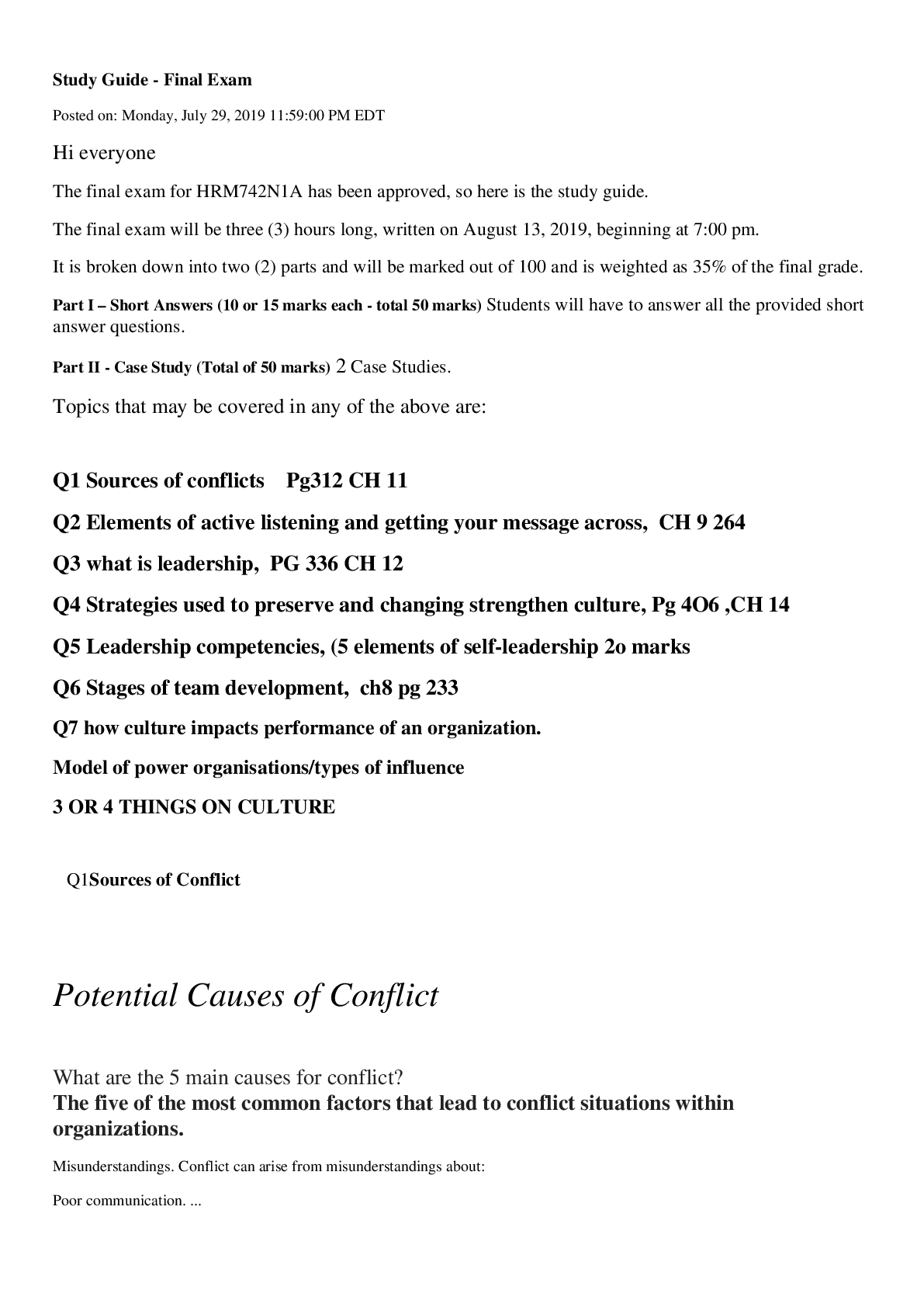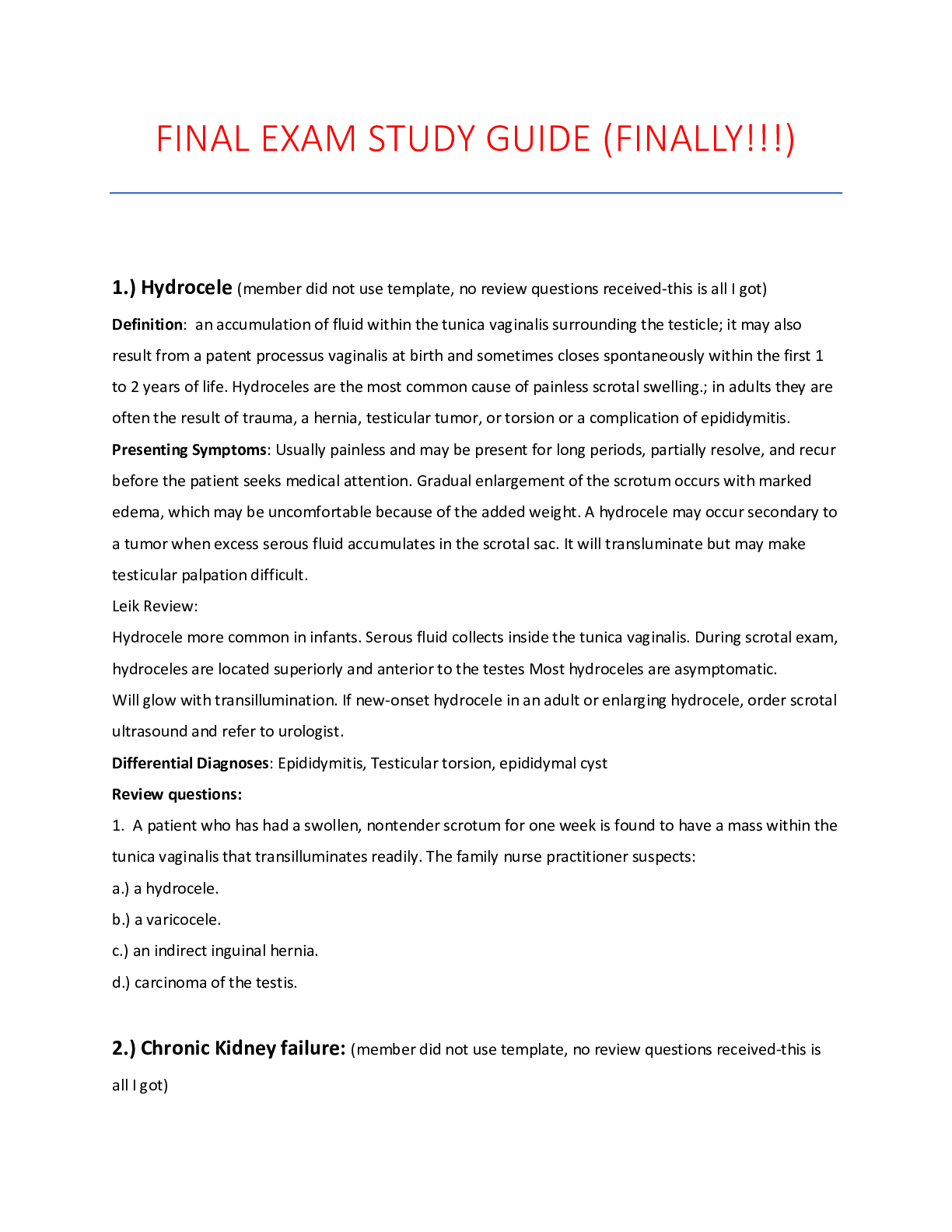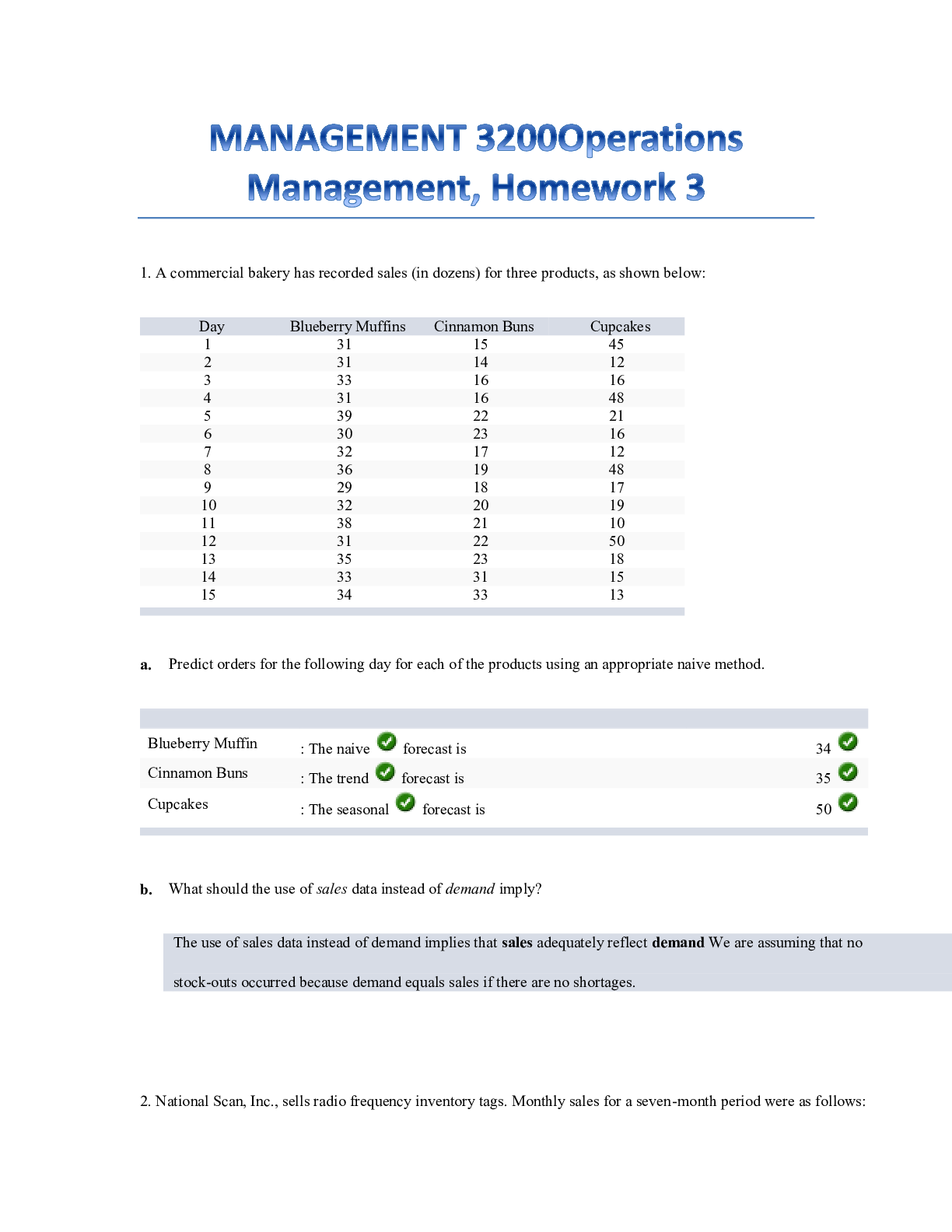*NURSING > STUDY GUIDE > Rasmussen College:PN1 Exam Study Guide. Latest update. (All)
Rasmussen College:PN1 Exam Study Guide. Latest update.
Document Content and Description Below
1. Dietary adjustment for constipation Increase fiber/water, whole grains, fruit, veggies 2. Pt has an indwelling catheter, describe cares common for this apparatus. • Use routine hygiene ... to clean periurethral area; antiseptic cleaning solutions are NOT recommended. • Leave catheters in place only as long as needed. (strongest predictor of a CAUTI) • Assess need for urinary catheter daily and document patient needs or indications. • Maintain a closed system by ensuring that catheter tubing connections are sealed securely • If breaks in the system occur, replace the catheter and entire collecting system. • Maintain unobstructed urine flow: keep the catheter and collecting tube free from kinking. • Keep the urine collection bag below the level of the bladder and do not rest the bag on the floor • Empty the bag regularly, using a separate, clean container for each patient. • Ensure that the drainage spigot does not come into contact with nonsterile surfaces. • Secure the catheter to the patient's thigh (women) or lower abdomen (men); catheter movement can cause urethral friction and irritation. • Consider the use of antiseptic or antimicrobial catheters for patients requiring urinary catheters for more than 3 to 5 days. These catheters reduce bacterial colonization (i.e., biofilm) along the catheter. 3. What is functional urinary incontinence and what type of education would you do for the pt. Leakage of urine caused by factors other than disease of the lower urinary tract. Patient Education → maintain tissue integrity, establish voiding pattern, catheterization for control, empty bladder, kegel exercises, elastic waistbands *A long-term urinary catheter is appropriate for patients with disrupted TISSUE INTEGRITY who need a dry environment for healing, for those who are terminally ill and need COMFORT, and for those who are critically ill and require precise measurement of urine output* 4. How do you prevent skin breakdown to the peri area with acute diarrhea • Use medicated wipes/pre moistened disposable wipes. • Clean with mild soap and warm water after each stool; rinse soap from the area well. • Sitz bath several times per day. • Apply a barrier cream (A+D ointment or other medicated protective barrier, such as aloe products) • Keep the patient off the affected buttock area. • Cover open areas with thin DuoDerm or Tegaderm occlusive dressing to promote rapid healing. • Observe for fungal or yeast infections, which appear as dark red rashes with “satellite” lesions. 5. Teaching patients about Lasix Stand slowly → Orthostatic hypotension, Ototoxicity Monitor weight gain (excess water) → notify if over 2-3lb gain in one day → fluid retention Do not take at HS Diet → Supplement potassium (dietary = avocado, baked potato, bananas, bran) and restrict Calcium (chocolate, smoked fish, low fat milk) & avoid coffee/tea Monitor for s/sx of hypokalemia - muscle weakness, heart palpitations, tingling/numbness [Show More]
Last updated: 2 years ago
Preview 1 out of 5 pages

Buy this document to get the full access instantly
Instant Download Access after purchase
Buy NowInstant download
We Accept:

Reviews( 0 )
$9.00
Can't find what you want? Try our AI powered Search
Document information
Connected school, study & course
About the document
Uploaded On
Sep 10, 2020
Number of pages
5
Written in
Additional information
This document has been written for:
Uploaded
Sep 10, 2020
Downloads
0
Views
108


















.png)
 Rasmussen College.png)





